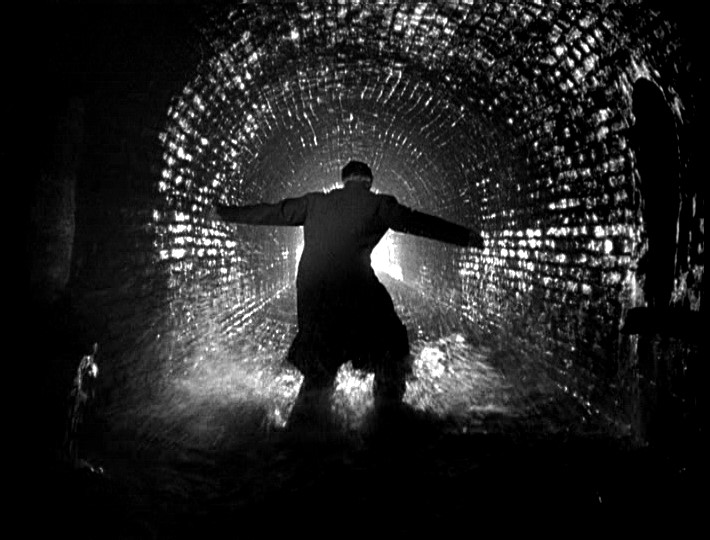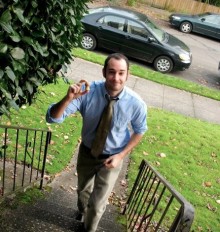 I teach 11th grade English at a high school located in downtown Portland, Oregon. I see my students every day, and as you might imagine, I have my ups and downs. Some days, when the lesson plan is solid and I’m properly caffeinated, I feel like I’m nailing it. The conversation is great, kids are forming opinions and getting passionate about the subject matter, and any minute my trophy will arrive for teacher of the year. But other times, I can’t help but wonder why somebody hasn’t come along and yanked me off the stage already.
I teach 11th grade English at a high school located in downtown Portland, Oregon. I see my students every day, and as you might imagine, I have my ups and downs. Some days, when the lesson plan is solid and I’m properly caffeinated, I feel like I’m nailing it. The conversation is great, kids are forming opinions and getting passionate about the subject matter, and any minute my trophy will arrive for teacher of the year. But other times, I can’t help but wonder why somebody hasn’t come along and yanked me off the stage already.
I do a lot of talking to the students, and in turn the students do a lot of talking with me and with each other. Mostly, we talk about literature and writing. Stuff like tone, character, plot structure, symbolism, the works. How we feel about the characters. How we feel about the author. How we suspect the author might want us to feel about the characters. I really do love it, and I consider myself incredibly lucky that I get to have these conversations all the time with people who are engaged and informed and excited to learn.
But when it comes to writing, there’s a limit to the value of talking. At a certain point, I truly believe, you have to shut up and listen, and not just to other people, but to the world itself.
So on one particular afternoon, when I saw that the conversation was dragging, the eyelids were getting heavy, and the post-lunch yawns were on the creep, I decided that it was no longer time to yap. It was time to take a walk, as a class, around the neighborhood.
Before we set out, I laid down the rules. No talking. No cell phones. Avoid forms of nonverbal communication with each other (e.g. poking, tripping, massaging, mouthing curse words, etc.). We were going to shut up and walk, taking note of anything that we might come across. This, I hoped, was going to be an important lesson on writing.
A few nightmare scenarios ran through my mind just as we set out. The sky might suddenly open up and cast down rain, hail, lightning, brimstone, etc. upon us, sending my tightly organized and mindful class into a frenzied, save-your-own-ass stampede. One of the many disenfranchised individuals camping on the street might decide it’s the right time to take issue with my face. A student might get so absorbed in the present moment that she wanders into the middle of traffic. Or, more realistically, the whole thing will feel weird and just…kind of silly.
But there we were, walking out of the school building and onto the busy sidewalk. We made our way through the city streets silently, a slow-moving mass emitting no sounds except maybe the rhythmic pads and clicks of our shoes against the pavement. On the first block, we carried with us a kind of shrugging sheepishness; we’d pass by people and greet their puzzled expressions with half-smiles, all too aware of our unusual noiselessness. This was a new thing, to simply observe without the distraction of conversation or the filter of a Spotify playlist or podcast in our earbuds. It felt awkward.
Gradually, we settled into it. It’s a totally bizarre and worthwhile feeling to move in a silent group. You feel calm, reflective, but also sort of badass. Based on their quizzical expressions, the people we passed by on the street were unnerved by us. How often do you see a group of 20 teenagers just walking? Not talking, not looking at their phones. Just walking. Were we some kind of cult?
As we waited for the walk signal at an intersection, a blue BMW with tinted windows boomed and rattled past us. From its slightly cracked windows blasted UB40’s “Red, Red Wine.” The car’s presence was enormous. We resisted the immediate urges to laugh, dance, sing along, or scoff. Instead, we just watched as it trundled down the avenue, rippling its effects across the afternoon.
When you’re doing nothing but observing, every movement in the world becomes a story, and every image becomes a composition: construction workers framed by the cubic bones of an unfinished apartment building; the catch and release of cars at a four-way intersection; the violent hock-hock-spit of a red-faced jogger. And, to me at least, an ineffable humor becomes apparent. From a detached eye, the disparate elements of an urban street corner can come together in a cosmic and gentle punchline.
Now, in full disclosure, I have no idea what my students felt about this exercise. I kind of lost track of time, and when we finally arrived back to the classroom the period was just ending. I dismissed the students with a thank you and a nod. Maybe some of them were wondering why we just wasted fifteen minutes of class time. Maybe some of them were just happy to get outside for a little bit. But I prefer to think that a few of them, at least, were genuinely moved by the experience. Maybe they saw the same old neighborhood with a completely new perspective. And that is as good a place as any to begin writing.

